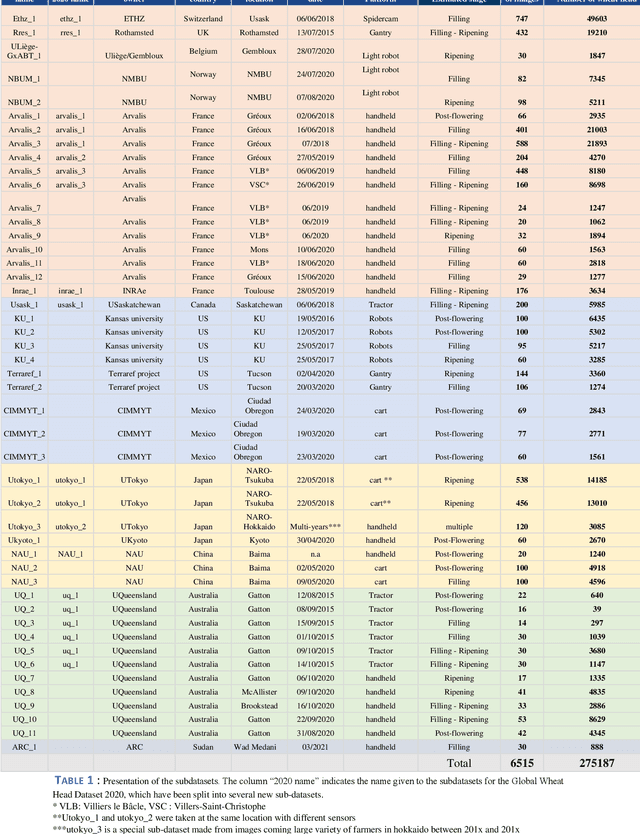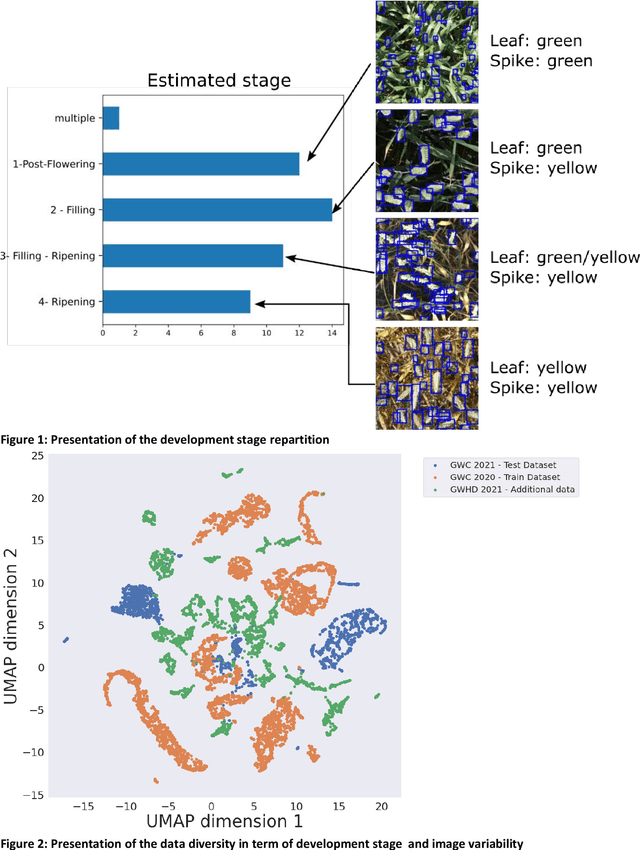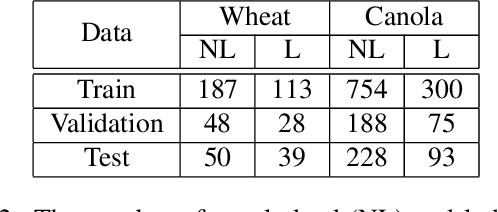Curtis Pozniak
Global Wheat Head Dataset 2021: more diversity to improve the benchmarking of wheat head localization methods
Jun 03, 2021

Abstract:The Global Wheat Head Detection (GWHD) dataset was created in 2020 and has assembled 193,634 labelled wheat heads from 4,700 RGB images acquired from various acquisition platforms and 7 countries/institutions. With an associated competition hosted in Kaggle, GWHD has successfully attracted attention from both the computer vision and agricultural science communities. From this first experience in 2020, a few avenues for improvements have been identified, especially from the perspective of data size, head diversity and label reliability. To address these issues, the 2020 dataset has been reexamined, relabeled, and augmented by adding 1,722 images from 5 additional countries, allowing for 81,553 additional wheat heads to be added. We now release a new version of the Global Wheat Head Detection (GWHD) dataset in 2021, which is bigger, more diverse, and less noisy than the 2020 version. The GWHD 2021 is now publicly available at http://www.global-wheat.com/ and a new data challenge has been organized on AIcrowd to make use of this updated dataset.
AutoCount: Unsupervised Segmentation and Counting of Organs in Field Images
Jul 17, 2020



Abstract:Counting plant organs such as heads or tassels from outdoor imagery is a popular benchmark computer vision task in plant phenotyping, which has been previously investigated in the literature using state-of-the-art supervised deep learning techniques. However, the annotation of organs in field images is time-consuming and prone to errors. In this paper, we propose a fully unsupervised technique for counting dense objects such as plant organs. We use a convolutional network-based unsupervised segmentation method followed by two post-hoc optimization steps. The proposed technique is shown to provide competitive counting performance on a range of organ counting tasks in sorghum (S. bicolor) and wheat (T. aestivum) with no dataset-dependent tuning or modifications.
Crop Lodging Prediction from UAV-Acquired Images of Wheat and Canola using a DCNN Augmented with Handcrafted Texture Features
Jun 18, 2019



Abstract:Lodging, the permanent bending over of food crops, leads to poor plant growth and development. Consequently, lodging results in reduced crop quality, lowers crop yield, and makes harvesting difficult. Plant breeders routinely evaluate several thousand breeding lines, and therefore, automatic lodging detection and prediction is of great value aid in selection. In this paper, we propose a deep convolutional neural network (DCNN) architecture for lodging classification using five spectral channel orthomosaic images from canola and wheat breeding trials. Also, using transfer learning, we trained 10 lodging detection models using well-established deep convolutional neural network architectures. Our proposed model outperforms the state-of-the-art lodging detection methods in the literature that use only handcrafted features. In comparison to 10 DCNN lodging detection models, our proposed model achieves comparable results while having a substantially lower number of parameters. This makes the proposed model suitable for applications such as real-time classification using inexpensive hardware for high-throughput phenotyping pipelines. The GitHub repository at https://github.com/FarhadMaleki/LodgedNet contains code and models.
DeepWheat: Estimating Phenotypic Traits from Crop Images with Deep Learning
Jan 26, 2018



Abstract:In this paper, we investigate estimating emergence and biomass traits from color images and elevation maps of wheat field plots. We employ a state-of-the-art deconvolutional network for segmentation and convolutional architectures, with residual and Inception-like layers, to estimate traits via high dimensional nonlinear regression. Evaluation was performed on two different species of wheat, grown in field plots for an experimental plant breeding study. Our framework achieves satisfactory performance with mean and standard deviation of absolute difference of 1.05 and 1.40 counts for emergence and 1.45 and 2.05 for biomass estimation. Our results for counting wheat plants from field images are better than the accuracy reported for the similar, but arguably less difficult, task of counting leaves from indoor images of rosette plants. Our results for biomass estimation, even with a very small dataset, improve upon all previously proposed approaches in the literature.
 Add to Chrome
Add to Chrome Add to Firefox
Add to Firefox Add to Edge
Add to Edge